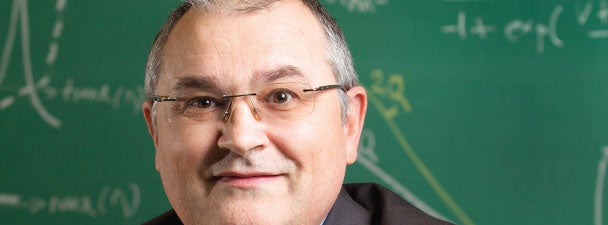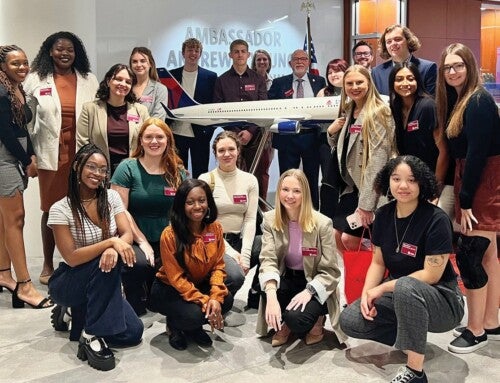 All models are wrong: It’s the first thing Sorinel Oprisan tells his students at the beginning of every semester, and the one thing he hopes they remember when they leave his class at the end of the semester. “I want them to think outside the boundaries, question the foundations,” says the physics professor, who credits his own ability to wander outside of the standards to his interdisciplinary training in computer science, theoretical physics and computational neuroscience. “Sometimes solutions come while focusing on totally different questions. It is always a good exercise to step aside and open other collaborations in new fields.”
All models are wrong: It’s the first thing Sorinel Oprisan tells his students at the beginning of every semester, and the one thing he hopes they remember when they leave his class at the end of the semester. “I want them to think outside the boundaries, question the foundations,” says the physics professor, who credits his own ability to wander outside of the standards to his interdisciplinary training in computer science, theoretical physics and computational neuroscience. “Sometimes solutions come while focusing on totally different questions. It is always a good exercise to step aside and open other collaborations in new fields.”
It’s with this understanding that, in 2005, Oprisan took on the challenge of attracting undergraduates to the interdisciplinary field of computational neuroscience, which requires a comprehensive background knowledge of biology, mathematics, physics, computer science and psychology.
 “In order to create a positive feedback loop that helps me with recruiting undergraduates, I developed new curricula,” says Oprisan – who, in his six years at the College, has created four new classes and mentored more than 16 undergraduate students, written four papers with undergraduate co-authors, supervised six senior research projects and had numerous students receive various grants, fellowships and awards. As Oprisan says, “The recruiting model worked.”
“In order to create a positive feedback loop that helps me with recruiting undergraduates, I developed new curricula,” says Oprisan – who, in his six years at the College, has created four new classes and mentored more than 16 undergraduate students, written four papers with undergraduate co-authors, supervised six senior research projects and had numerous students receive various grants, fellowships and awards. As Oprisan says, “The recruiting model worked.”
So, apparently, not all models are wrong. In fact, Oprisan must have been doing something right: This year the National Science Foundation awarded him with the prestigious Faculty Early Career Development grant, thus recognizing Oprisan himself as a model teacher-scholar who exemplifies excellent education, outstanding research and creative integration of research and education.
“This NSF-career award allows me to actually focus both on exciting educational and research goals,” says Oprisan, who plans to continue developing computational neuroscience curricula for the College’s neuroscience and biomedical physics minors with the goal of expanding it into the field of biomedical-signal processing. “At the same time, I bring to my classes my research projects – not only in the upper-level biophysical modeling class, but also in the general-education classes.”
These projects deal largely with how the firing patterns of neural networks relate to the individual neurons, with the ultimate goal of correcting locomotive disabilities and disrupting epileptic seizures. Thus, Oprisan will use the $500,000 research grant included with his NSF award “to focus on designing, implementing and testing new models for neural networks.”
But, if these new models are anything like his recruiting model or his model for education–research integration, Oprisan might have to change his tune.
After all, it seems not all models are wrong … at least not those that Oprisan creates.




